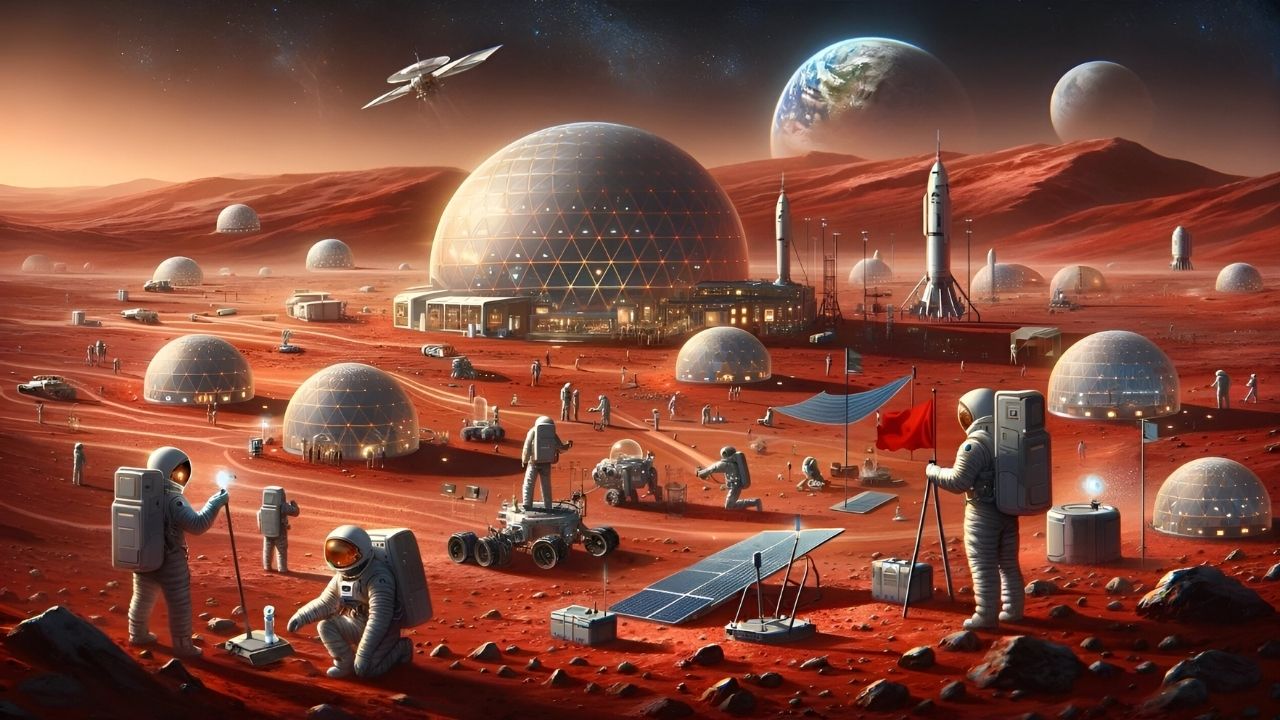
Mars colonization has fascinated humanity for decades, sparking dreams of interplanetary living. But what does it really take to make the Red Planet our second home? Mars isn't just a dusty, red rock floating in space; it's a world with its own challenges and mysteries. From the thin atmosphere to the freezing temperatures, every aspect of Mars presents unique hurdles. Yet, the potential rewards are immense. Imagine living in a place where sunsets are blue, and the tallest volcano in the solar system, Olympus Mons, looms on the horizon. Elon Musk and NASA have ambitious plans, but how close are we to making these dreams a reality? Let's dive into 25 intriguing facts that will give you a clearer picture of what it takes to colonize Mars.
Key Takeaways:
- Mars, the Red Planet, is smaller than Earth and has a thin, cold atmosphere. Challenges like radiation and toxic soil must be overcome for successful colonization.
- Innovations in technology, like SpaceX's Starship and NASA's Perseverance rover, are making the dream of living on Mars more achievable. International cooperation and ethical considerations are crucial for the future of Mars colonization.
The Red Planet: Mars
Mars, often called the Red Planet, has fascinated humans for centuries. Its reddish appearance, caused by iron oxide on its surface, makes it stand out in the night sky. Colonizing Mars has moved from science fiction to serious scientific discussion.
-
Mars is the fourth planet from the Sun, sitting between Earth and Jupiter.
-
The planet's diameter is about half that of Earth, making it the second smallest planet in our solar system.
-
Mars has two moons, Phobos and Deimos, which are thought to be captured asteroids.
-
The surface temperature on Mars can drop to -195 degrees Fahrenheit at the poles during winter.
-
A Martian day, called a sol, is just 39 minutes longer than an Earth day.
Atmosphere and Climate
Understanding Mars' atmosphere and climate is crucial for colonization. The thin atmosphere poses challenges but also offers unique opportunities.
-
Mars' atmosphere is 100 times thinner than Earth's, composed mostly of carbon dioxide.
-
Dust storms on Mars can cover the entire planet and last for months.
-
The average surface temperature is about -80 degrees Fahrenheit, but it can vary greatly.
-
Mars has seasons like Earth, due to its tilted axis, but they last twice as long.
-
Liquid water cannot exist on the surface due to low atmospheric pressure, but ice is present at the poles.
Challenges of Living on Mars
Living on Mars will not be easy. The environment is harsh, and many obstacles must be overcome to establish a sustainable colony.
-
Radiation from the Sun and cosmic rays is much higher on Mars due to its thin atmosphere and lack of a magnetic field.
-
The low gravity, about 38% of Earth's, could affect human health over long periods.
-
Dust on Mars is fine and pervasive, potentially harmful to both machinery and human lungs.
-
Food production will need to be done in controlled environments, as the soil is toxic due to high levels of perchlorates.
-
Water extraction from ice or underground sources will be essential for survival.
Technological Innovations
Advancements in technology are making Mars colonization more feasible. These innovations will help address many of the challenges.
-
SpaceX's Starship aims to transport humans to Mars, with plans for the first crewed mission in the 2020s.
-
NASA's Perseverance rover is testing technologies for producing oxygen from Martian CO2.
-
3D printing could be used to build habitats using Martian soil, reducing the need to transport materials from Earth.
-
Nuclear propulsion systems could shorten the travel time to Mars, reducing exposure to space radiation.
-
Autonomous robots will likely play a significant role in constructing and maintaining Martian colonies.
The Future of Mars Colonization
Looking ahead, the dream of living on Mars is becoming more tangible. Various plans and proposals are being developed to make this a reality.
-
The Mars Society advocates for human exploration and settlement of Mars, promoting international cooperation.
-
Elon Musk envisions a self-sustaining city on Mars with a population of one million people by 2050.
-
Scientists are exploring the possibility of terraforming Mars, making it more Earth-like by thickening the atmosphere and warming the planet.
-
International collaboration, involving space agencies like NASA, ESA, and Roscosmos, will be crucial for successful colonization.
-
Ethical considerations, such as the potential impact on any existing Martian life forms, must be addressed before colonization begins.
Mars Colonization: The Final Frontier
Mars colonization isn't just science fiction anymore. With SpaceX and NASA leading the charge, humans might soon call the Red Planet home. The challenges are immense, from dealing with radiation to finding sustainable resources. Yet, the potential rewards are equally vast. Imagine new scientific discoveries, technological advancements, and even the possibility of a backup plan for humanity.
Living on Mars will require innovation, resilience, and global cooperation. The journey will be tough, but the spirit of exploration has always driven humanity forward. As we stand on the brink of this new era, the dream of Mars colonization brings hope and excitement. It’s a bold step into the unknown, but one that could redefine our place in the universe. The future of Mars colonization holds endless possibilities, and it's a journey worth taking.
Frequently Asked Questions
Was this page helpful?
Our commitment to delivering trustworthy and engaging content is at the heart of what we do. Each fact on our site is contributed by real users like you, bringing a wealth of diverse insights and information. To ensure the highest standards of accuracy and reliability, our dedicated editors meticulously review each submission. This process guarantees that the facts we share are not only fascinating but also credible. Trust in our commitment to quality and authenticity as you explore and learn with us.
